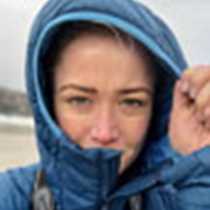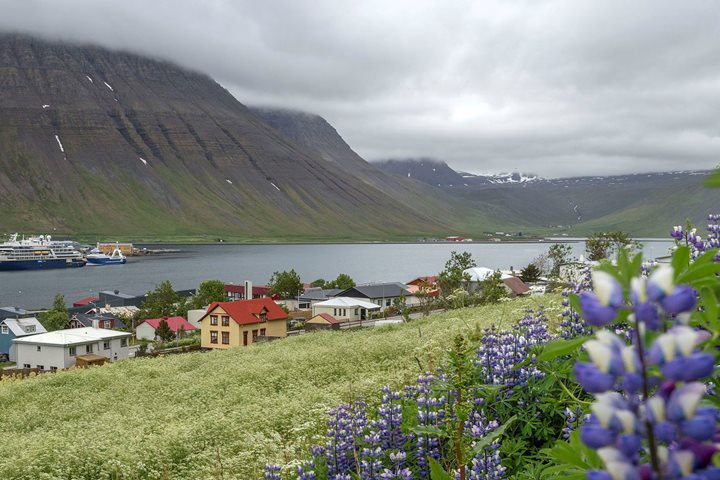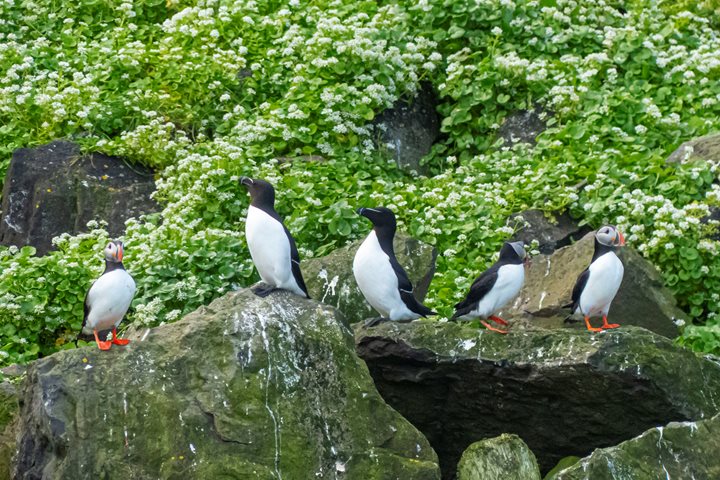Svalbard is known for its wildlife. Many of us choose to come here based on the notion that we will see polar bears and walrus. This morning we saw polar bears, this afternoon we saw over 100 Walrus. Our early morning wake up call was welcomed with flinging arms and a mound of thermals hurriedly piled one on top of the other as we rushed out onto deck to see a polar bear wandering across the rocky shoreline. Any notion of our rumbling breakfast stomachs was immediately forgotten.
We were immersed as this large male bear ambled along the shoreline of Sorgfjord in the northern Hinlopenstretet. It appeared to be seeking out any items of prey it could find. With the ice edge having retreated exceedingly far north this year, polar bears are marooned unexpectedly early on the islands of Svalbard. Without the sea ice and its abundance of seals to smell out and hunt, the islands of Svalbard become the bears’ new foraging ground. Despite the lack of sea ice this bear looked healthy and we enjoyed observing it for a couple of hours before moving southeast through the Hinlopenstretet.
Our next destination is one of Svalbard’s most impressive wildlife destinations. It may be bears and walrus that feature prominently in our first notions of Svalbard and the Arctic in general, but it is the bird life that can surprisingly overwhelm an Arctic traveller. Alkefjellet is a sheer columnar cliff face on the southern side of the Hinlopenstretet. The geology alone is impressive, but add to this towering scene 70,000 breeding pairs of Brünnich’s guillemots and you have a wildlife mecca.
Whether it’s the sounds, smells or images that hit you first, there is no denying the presence of tens of thousands of Brünnich’s guillemots. As we took out into the Zodiacs we were engrossed as we craned our necks and took in the immense scene before us.
Piling back on board the National Geographic Orion, some of us had been luckier than others when it came to avoiding the guillemot guano and as we continued down the Hinlopenstretet - our stomachs filled with warming hot chocolate and the ship’s famous afternoon tea – we were soon to find our next great wildlife encounter of the day. Over 100 walrus were hauled out on shore and as Captain Martin navigated the ship close to the shoreline we all enjoyed the late afternoon spectacle as one of the Arctic’s most iconic species proved to us why we have made our way to one of the northernmost places on earth.







